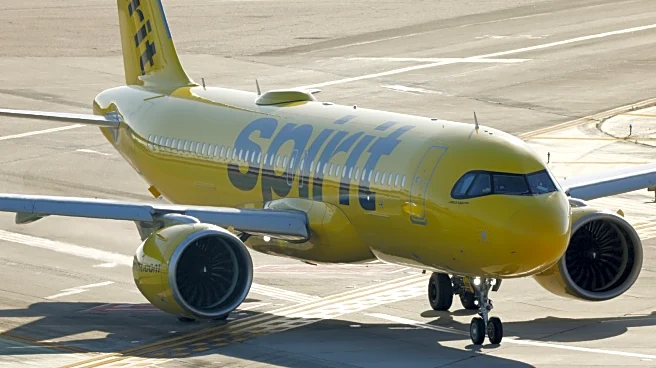What is the story about?
What's Happening?
Spirit Airlines is set to discontinue service in 11 U.S. cities as part of a major network redesign amid its Chapter 11 bankruptcy proceedings. The airline is restructuring to focus on its strongest markets, citing competition, engine issues, and lease terminations as key challenges. The cities affected include Albuquerque, Birmingham, Boise, Chattanooga, Columbia, Oakland, Sacramento, San Jose, San Diego, Portland, and Salt Lake City. Spirit will also not launch planned services in Macon, Georgia. The airline is committed to notifying affected passengers and offering refunds. The restructuring aims to enhance connectivity in key markets and improve operational efficiency.
Why It's Important?
The decision to cut services in multiple cities reflects Spirit Airlines' strategic shift to stabilize its operations and focus on profitability. This move could impact local economies and travelers in the affected regions, reducing travel options and potentially increasing fares due to decreased competition. The restructuring highlights the broader challenges faced by budget airlines in maintaining extensive networks while managing financial and operational pressures. Spirit's focus on key markets may lead to improved service and connectivity in those areas, but it also underscores the volatility and risk inherent in the ultra-low-cost carrier model.
What's Next?
Spirit Airlines will continue to operate during its restructuring, serving destinations in the U.S., Latin America, and the Caribbean. The airline plans to furlough pilots and adjust its workforce as part of cost-cutting measures. The network redesign will focus on enhancing service in key markets, potentially leading to increased frequencies and connectivity. Spirit's ability to successfully restructure and emerge from bankruptcy will depend on its capacity to manage costs, optimize its network, and navigate competitive pressures. The outcome of these efforts will be closely watched by industry stakeholders and could influence future strategies for other low-cost carriers.
AI Generated Content
Do you find this article useful?
















